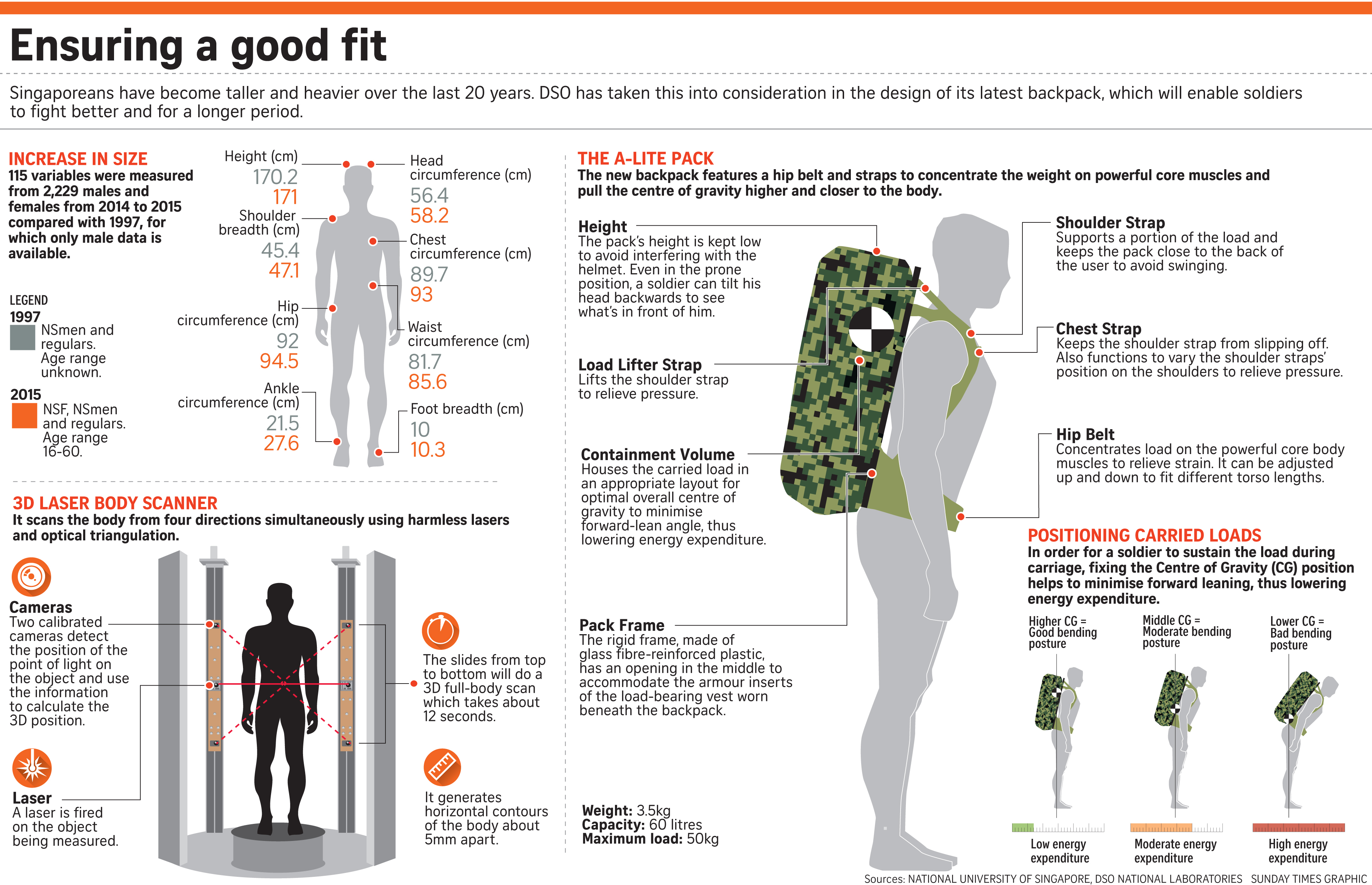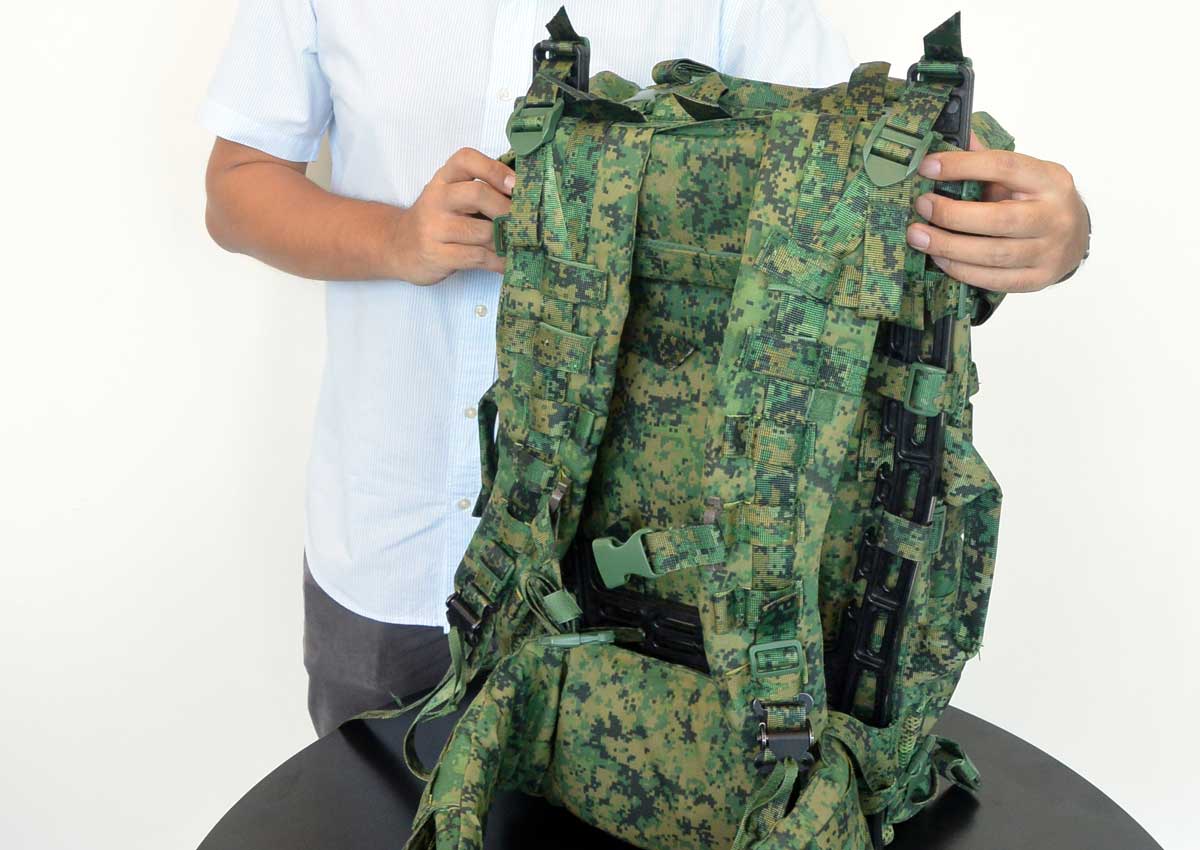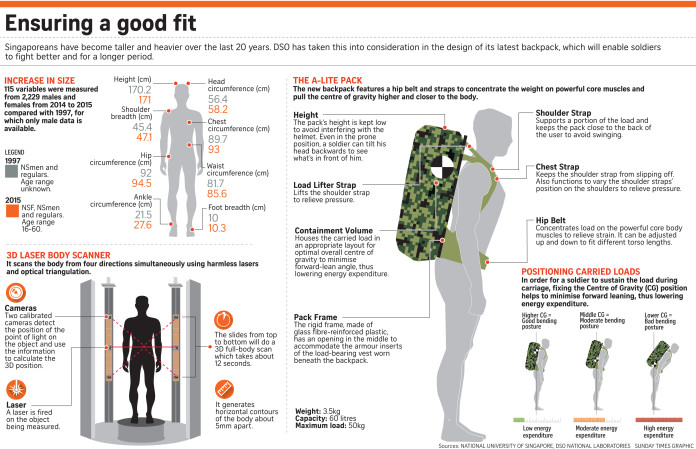A new backpack which aims to take the weight off the shoulders of the Republic’s troops is being developed.
The A-Lite Pack was invented by the DSO National Laboratories which carried out a detailed study of Singaporean body shapes and sizes with researchers from the National University of Singapore (NUS).
They discovered that between 1997 and 2015, the average height of Singapore men increased from 170.2cm to 171cm.
Meanwhile their average shoulder breadths expanded from 45.4cm to 47.1cm, while their waistlines went up from 81.7cm to 85.6cm, the researchers told The Sunday Times.
The A-Lite Pack was unveiled at the SGDefence exhibition at Marina Bay Sands last week where both national servicemen and the public had the opportunity to try it out.
It has a large hip belt that concentrates the load on the body’s stronger core muscles. It is also adjustable up or down to fit different torso lengths.
Inside the pack, an adjustable “load shelf” keeps heavy items near the top of the pack, moving the pack’s centre of gravity higher and closer to the body’s centre of gravity to minimise forward leaning.
This is important when the maximum designed load of the pack is a muscle-numbing 50kg.
Furthermore, the pack is modular. The shoulder straps, hip belt and frame can be detached and replaced if they are damaged or if different designs are desired.

The pack also has additional features not found in civilian backpacks. For example, its glass fibre-reinforced plastic frame is narrow enough not to interfere with arm movements, and it has a large opening in the middle allowing space for the armour inserts of the load-bearing vest worn underneath the pack.
And the height of the pack is kept low to prevent it from interfering with the soldier’s helmet.
Dr Frederick Tey, a DSO programme manager in the team that designed the pack, said: “The success of military operations depends on soldiers’ ability to perform. It is important to design equipment that enables the soldier to execute tasks effectively.”
The pack is undergoing trials.
A 2010 report in The Straits Times cited NUS Associate Professor Tan Kay Chuan, who conducted a similar study, as attributing size increases among Singaporeans to better nutrition and higher income. But the researchers in the latest study cautioned against drawing conclusions as there is no direct evidence.
The latest results have potential applications in many sectors.
Associate Professor Lee Heow Pueh from NUS’ Department of Mechanical Engineering, who led the NUS team in this study, said: “For certain industries, it’s quite important (to know people’s body dimensions).
“For example, with the aircraft cockpit – you need to place the most important controls within reach, especially in the event of emergency… And based on certain (measured) dimensions, we can actually come up with a shirt-sizing system more suitable for the Asian.”

This article was first published on Nov 13, 2016.
Get a copy of The Straits Times or go to straitstimes.com for more stories.







